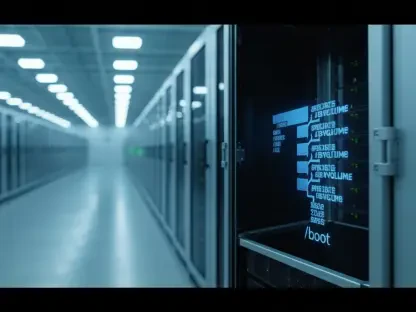Welcome to an insightful conversation with Vijay Raina, our esteemed expert in enterprise SaaS technology and software design. With a deep background in Jakarta EE development and a passion for robust testing methodologies, Vijay has been at the forefront of crafting high-quality Java enterprise applications. In this interview, we dive into the critical role of testing in software development, exploring its impact on code quality, the nuances of various testing strategies, and the powerful tools that Jakarta EE developers can leverage. We also touch on practical approaches like Test-Driven Development and the integration of modern frameworks with Jakarta NoSQL and Jakarta Data. Join us as Vijay shares his expertise and real-world insights on building reliable, maintainable software.
How do you see the role of testing in software development, especially when it’s often treated as an afterthought?
Testing is absolutely fundamental to delivering reliable software, yet it’s often pushed to the back burner because of tight deadlines or a focus on getting features out the door. In my experience, this mindset can lead to costly mistakes down the line. Testing acts as a safety net, catching issues before they reach production and giving developers confidence to make changes. I’ve seen projects where neglecting testing early on resulted in brittle code that was nearly impossible to refactor without breaking something. When done right, testing isn’t just about finding bugs—it’s about ensuring the software behaves as intended and can evolve over time.
What are some of the most significant benefits of testing that you’ve observed in your work with Jakarta EE applications?
In Jakarta EE projects, where you’re dealing with complex, multi-layered systems, testing brings several key benefits. First, it dramatically improves code quality by validating logic at every level, from individual components to full system behavior. I’ve noticed that well-tested code is much easier to refactor, which is critical in enterprise environments where requirements shift frequently. Testing also fosters adaptability—when you have a solid suite of tests, you can integrate new features or update dependencies without fear of unintended consequences. Ultimately, it saves time and resources by reducing the need for extensive debugging later in the cycle.
Can you break down the differences between unit tests, integration tests, and system tests, and explain why each is important in a Jakarta EE context?
Absolutely. Unit tests focus on the smallest pieces of code, like a single method or class, ensuring that each component works in isolation. They’re quick to run and great for validating core logic. Integration tests, on the other hand, check how different parts of the application work together, such as a service interacting with a database in a Jakarta EE environment. These are crucial for catching issues in component interactions. System tests go even further, verifying the entire application’s behavior under real-world conditions, often simulating user interactions. In Jakarta EE, where you have layers like persistence and messaging, each type of test ensures a different aspect of the system is robust, providing comprehensive coverage across the stack.
How do you approach measuring the effectiveness of tests, and what are your thoughts on relying solely on test coverage metrics?
Test coverage is a useful starting point—it tells you what percentage of your code is executed during testing. I typically use tools like JaCoCo to track this in Jakarta EE projects. However, I’m cautious about over-relying on it. A 100% coverage score doesn’t mean your tests are effective; you might be missing edge cases or failing to validate critical business logic. I’ve been on projects where high coverage gave a false sense of security, only for bugs to surface in production. That’s why I advocate pairing coverage with other techniques like mutation testing, which tweaks the code to see if your tests catch the changes. This combination gives a much clearer picture of test quality and helps identify weak spots.
What has been your experience with mutation testing, and how does it complement traditional coverage metrics in ensuring software reliability?
Mutation testing has been a game-changer for me in assessing test suite strength. It essentially introduces small, deliberate errors—or mutations—into the code and checks if your tests detect them. If they don’t, it’s a sign your tests aren’t thorough enough. In one Jakarta EE project, mutation testing revealed that while our coverage was high, many tests weren’t asserting the right outcomes. It forced us to rethink our test design and write more meaningful assertions. When paired with coverage metrics, mutation testing ensures not just that your code is run, but that your tests are actually validating correctness, providing a deeper level of confidence in the software.
Which testing tools or frameworks do you find most valuable for Jakarta EE development, and why do they stand out?
For Jakarta EE, I’ve worked with a variety of tools, each with its strengths. JUnit Jupiter, paired with AssertJ, is my go-to for unit and integration testing because it makes tests readable and expressive. TestContainers is fantastic for integration testing with external dependencies like databases—it spins up real containers, so you’re testing against a realistic environment without manual setup. I’ve also used WeldTest for testing CDI beans in isolation, which is incredibly lightweight compared to a full production container. While Arquillian is powerful for managing container lifecycles, I often find it overkill for smaller projects due to its complexity. These tools stand out because they address the unique challenges of testing in a multi-layered Jakarta EE ecosystem.
Can you share how Test-Driven Development (TDD) has influenced your approach to building software, and what challenges did you face when adopting it?
TDD has profoundly shaped how I design and build software. The process of writing a failing test, making it pass, and then refactoring forces you to think about requirements and edge cases upfront. In a Jakarta EE project, this led to cleaner, more modular code because I was constantly refining my design based on test feedback. However, adopting TDD wasn’t easy. Early on, it slowed down development as I adjusted to writing tests first—it felt counterintuitive compared to diving straight into coding. There’s also the risk of over-testing trivial logic if you’re not careful. Despite these hurdles, the long-term payoff in terms of maintainable code and fewer bugs has made TDD a cornerstone of my workflow.
How do you integrate modern testing approaches with technologies like Jakarta NoSQL and Jakarta Data in your projects?
Integrating testing with Jakarta NoSQL and Jakarta Data involves setting up environments that mirror production as closely as possible while keeping tests manageable. For instance, in a hotel management system project, I used TestContainers to spin up an Oracle NoSQL database in a Docker container, ensuring our tests interacted with a real database instance. We leveraged Jakarta Data’s repository pattern to define queries and used Weld for dependency injection during testing to simulate a Jakarta EE container. Tools like JUnit 5’s parameterized tests allowed us to validate logic across various data sets, which was crucial for ensuring robustness with NoSQL’s flexible schemas. This approach ensures that both data access and business logic are thoroughly tested in a realistic setup.
What is your forecast for the future of testing in Jakarta EE development, especially with emerging technologies and methodologies?
I’m optimistic about the future of testing in Jakarta EE, especially as the platform continues to evolve with cloud-native and microservices architectures. I expect tools like TestContainers to become even more integral as developers demand lightweight, reproducible test environments for distributed systems. We’ll likely see tighter integration of testing frameworks with platforms like Quarkus, making native and containerized testing seamless. Additionally, methodologies like mutation testing and AI-driven test generation could gain traction, helping automate and enhance test quality. As Jakarta EE embraces technologies like NoSQL and reactive programming, testing will need to adapt to handle asynchronous and event-driven patterns, pushing for more innovative tools and practices to ensure reliability at scale.









